

 White, red or rosé? Colour is not just about that!
White, red or rosé? Colour is not just about that!
What is the importance of the colour of the? Quite a lot actually. Many people like dark, dense wines, they promise body, power and lots of fruit. But lightly coloured wines, like wines made from Pinot Noir or Nebbiolo can have as intense, even more intense, aromas. But the colour is the first impression we get of the wine so of course we are influenced by it. And it is almost always the deep coloured wine that gives people the most positive impression.
What about white wines? Probably the same thing. A white wine with colour, a golden hue, gives people more positive vibrations than a wine whose appearance can be confused with water.
We get a first impression of the wine when we look at the colour. We see the colour and we imagine already how the wine is going to be. If you don’t like the light colour of the red Burgundy in your glass, maybe the brain will not register the lovely aromas on the nose.
If you do a blind tasting you will be helped a bit by looking at the colour. You can see if the wine is young (bluish-red), old (lighter, brownish), oak aged (brick) or made from grapes with low levels of colour pigment, like the two mentioned above.
But you can never be sure. Today, when wines are made everywhere in the world, in different climates, a Pinot Noir can be dark and a Syrah can be light. It is also up to the wine producer. He can work with the wine in the cellar to get the colour he wants. So, just look at the colour but don’t think too much about it! Concentrate on the taste.
The most difficult thing is probably to make rosé. Some may think it is easy to make rosé, that you simply let it become something in the middle, but no. It is actually more difficult to make rosé than white or red. For example, it is a challenge to get just the right colour, the one that you want. Or perhaps the one that the consumer wants. For when people buy rosé, they really look at the colour. Different markets like different colours. In France they typically like the very light rosés, in Spain they want them dark, almost red. What kind of rosé do you like?
Britt & Per
PS: Recommend to your friends to read the Brief !
– – – – –
What’s on at BKWine Tours
- Bordeaux, April 20-24, 2016
- Champagne, September 14-18
- Bordeaux, September 28 – October 2
- Douro Valley, October 12-16
- Chile and Argentina in South America, January 28 – February 12, 2017 (full program coming soon)
- South Africa, February 24 – March 7, 2017 (full program coming soon)
For more information please contact us on email or on phone (we’re on French time), or go to our wine travel site on www.bkwinetours.com!
We also make custom designed wine tours – on-demand tours for you and a group of friends, for your company (maybe to scout new winegrowers?), for a special event… We can combine winery visits and wine touring with other activities: gastronomic workshops, visit to an oyster farm, truffles hunting, cheese making, and more. More info on the custom designed and bespoke BKWine wine tours and travel here!
Wine tours in Finnish: We also do wine tours in Finnish. And in German, Norwegian, Spanish… Do you want the latest news and updates on our wine travel activity? Subscribe here! (Second alternative BKWineTours.com)
Do you want the latest news and updates on our wine travel activity? Subscribe here! (Second alternative BKWineTours.com)
From the World of Wine
News
Our two new wine books in shops: Wine guide to Bordeaux and to Tuscany
 “Guide to the World of Wine” is a new book series that we have just launched. The first two titles in the series are about Bordeaux and Tuscany. The books contain easy-to-read but fact-filled information about wine regions and are richly illustrated. They are published by Tukan förlag. More information about the series Guide to the World of Wine.
“Guide to the World of Wine” is a new book series that we have just launched. The first two titles in the series are about Bordeaux and Tuscany. The books contain easy-to-read but fact-filled information about wine regions and are richly illustrated. They are published by Tukan förlag. More information about the series Guide to the World of Wine.
Perhaps the most ambitious Swedish wine book project ever? Unfortunately they are currently only available in Swedish. We welcome enquiries for publication in other languages!
The first two books in the series are:
More titles will be launched in the autumn.
(They are of course the perfect preparation for a traveller, for example for a wine tour to Bordeaux, if you happen to read Swedish.)
Spanish wine selling in France
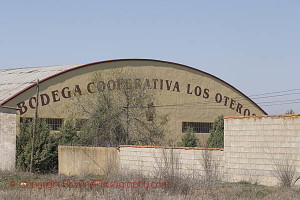 France imports more wine than you might think. Last year the country imported a record amount of wine and most of it was cheap bulk wine from Spain. In total France imported 7.2 million hectolitres last year, an increase of 11 % from 2014. 81 % of this was bulk wine and 75 % came from Spain. It was mostly simple wine with no geographical origin. In average the French paid 0.32 euros per litre for this wine. The French equivalent would have cost 1.06 euros per litre.
France imports more wine than you might think. Last year the country imported a record amount of wine and most of it was cheap bulk wine from Spain. In total France imported 7.2 million hectolitres last year, an increase of 11 % from 2014. 81 % of this was bulk wine and 75 % came from Spain. It was mostly simple wine with no geographical origin. In average the French paid 0.32 euros per litre for this wine. The French equivalent would have cost 1.06 euros per litre.
France also imports some bulk wine from South Africa, a total of 230,000 hectolitres last year. Also Italian wine is exported to France, more in bottle than in bulk. Sparkling wines account for 3 % of the French wine imports. France’s own production was last year was 47 million hectolitres. What do the French do with all this Spanish bulk wine? We wonder. Read more vitisphere.com
A new book about New Zealand’s wines with crowdfunding
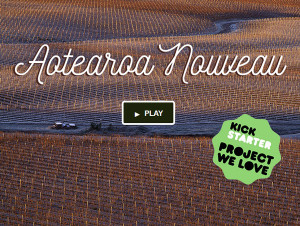 It has become popular with crowdfunding for wine books (Jura, Champagne, aromas and what not). Is it because the publishers are hard to persuade, or that wine writers do not like to work with structured and commercial publishing? Now a new book about New Zealand wines is in the works. It is called Aotearoa Nouveaux: Postmodern New Zealand Wine. Behind the somewhat complicated title is Jules van Cruysen, a New Zealand wine writer and now also restaurant owner. The book is a thorough introduction to the island country’s wines and a presentation of some seventy of Jules favourite producers. However, a little patience is required, the book is planned to come out in November. 2017. Support the crowdfunding project for the book on New Zealand’s wines here on Kickstarter (deadline April 20!).
It has become popular with crowdfunding for wine books (Jura, Champagne, aromas and what not). Is it because the publishers are hard to persuade, or that wine writers do not like to work with structured and commercial publishing? Now a new book about New Zealand wines is in the works. It is called Aotearoa Nouveaux: Postmodern New Zealand Wine. Behind the somewhat complicated title is Jules van Cruysen, a New Zealand wine writer and now also restaurant owner. The book is a thorough introduction to the island country’s wines and a presentation of some seventy of Jules favourite producers. However, a little patience is required, the book is planned to come out in November. 2017. Support the crowdfunding project for the book on New Zealand’s wines here on Kickstarter (deadline April 20!).
If you are curious and interested in New Zealand wines then I should also mention that we are thinking of organising a wine tour to New Zealand, perhaps in 2017. Send us an email if this might be of interest to you so that we know that we’re not totally wrong on this project.
2013 Novas Gran Reserva Cabernet Sauvignon, Maipo, Chile | Birgitta’s Wine of the Month
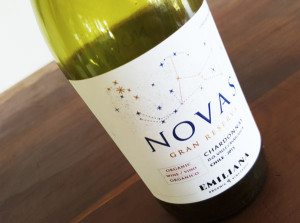 I must admit that there have been fewer and fewer wines from the New World on my table in recent years. It has happened to Chilean Cabernets have been dismissed as blackcurrant juice. But this dense, garnet red cabernet sauvignon has balance and a pleasant oak character. It has been aged in both French and American oak barrels with a third in steel tank.
I must admit that there have been fewer and fewer wines from the New World on my table in recent years. It has happened to Chilean Cabernets have been dismissed as blackcurrant juice. But this dense, garnet red cabernet sauvignon has balance and a pleasant oak character. It has been aged in both French and American oak barrels with a third in steel tank.
The nose is full of cherry, black currant and strawberry but also cedar, tobacco and liquorice. On top of this hovers a light tone of violets. The taste is fruity with blackcurrant and cherry with a hint of bitterness. There is tobacco and dark chocolate. The tannins are distinct but are offset by the subtle fruit and a quite substantial body. The wine is also organic and has a very reasonable price which makes it even more attractive. Price: ~10 euro. The wine is produced by Emiliana in Chile.
There is a revival in Chile, with many ambitious wines. Come on BKWine’s wine tour to Chile and Argentina in February to experience it yourself.
Château de la Dauphine in Fronsac is now certified organic
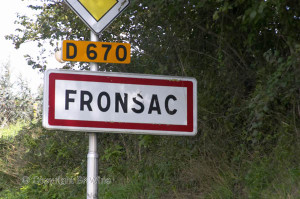 One of our favourite chateaux in Bordeaux, the beautiful Château de la Dauphine in Fronsac, will be certified organic from vintage 2015, now resting in the chateau cellar. We have visited the chateau on a regular basis since a few years back and we have understood that, among other things, the fact that the chateau actually lies, with its vineyards, in the middle of the town of Fronsac, makes organic farming particularly important. Bordeaux has had some difficult vintages during Château de la Dauphine’s conversion. They lost grapes in both 2012 and 2013. But they were not discouraged. 2015, however, was good both in terms of quantity and quality. “2015 will most certainly prove to be an exceptional vintage for us”, says Marion Merker at Château de la Dauphine. Château de la Dauphine also works according to biodynamic principles in vineyard but has no biodynamic certification. Read more: chateau-dauphine.com
One of our favourite chateaux in Bordeaux, the beautiful Château de la Dauphine in Fronsac, will be certified organic from vintage 2015, now resting in the chateau cellar. We have visited the chateau on a regular basis since a few years back and we have understood that, among other things, the fact that the chateau actually lies, with its vineyards, in the middle of the town of Fronsac, makes organic farming particularly important. Bordeaux has had some difficult vintages during Château de la Dauphine’s conversion. They lost grapes in both 2012 and 2013. But they were not discouraged. 2015, however, was good both in terms of quantity and quality. “2015 will most certainly prove to be an exceptional vintage for us”, says Marion Merker at Château de la Dauphine. Château de la Dauphine also works according to biodynamic principles in vineyard but has no biodynamic certification. Read more: chateau-dauphine.com
Curious to know more? La Dauphine is often on the program for our wine tour to Bordeaux. Join us there this autumn!
Who drinks the most Champagne?
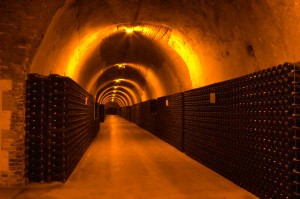 The Champagne trade association Comité Champagne (CIVC) has recently published the 2015 export figures for champagne. Britain is still the country that imports the greatest volume of champagne while the United States is the number one country for value. (Sweden is curiously on an honourable 10th position.) Champagne sold 312 million bottles last year, an increase with 1.7 %. France keeps 51.8 % for itself and exports 48.2 %.
The Champagne trade association Comité Champagne (CIVC) has recently published the 2015 export figures for champagne. Britain is still the country that imports the greatest volume of champagne while the United States is the number one country for value. (Sweden is curiously on an honourable 10th position.) Champagne sold 312 million bottles last year, an increase with 1.7 %. France keeps 51.8 % for itself and exports 48.2 %.
The 10 largest export markets for champagne (by volume) are:
- UK
- US
- Germany
- Japan
- Belgium
- Australia
- Italy
- Switzerland
- Spain and
- Sweden
The Champagne houses dominate the export. They account for 71 % of exports. 19.5 % comes from growers (recoltant-manipulants, RM) and 9 % from cooperatives. Read more: champagne.fr (pdf).
Precision viticulture with the VineRobot
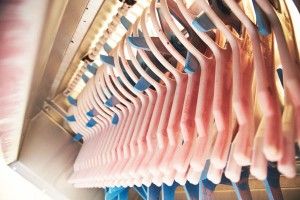 The wine grower has to take many decisions concerning the work in the vineyard. All decisions may affect the quality of the wine. So it is important that he makes the right decisions. Soon, the grower can get the help of VineRobot. This is a little robot that goes around the vineyard unmanned and equipped with the latest sensor technology. The robot measures the content of anthocyanins in grapes and the amount of nitrogen on the leaves. It creates maps of the status of the vineyard. These will tell the grower which part of the winery needs water, mineral supplements, etc. The VineRobot is a European project that involves several wine universities and wine regions. The robot will be ready to be launched end of the year. Read more vinerobot.eu.
The wine grower has to take many decisions concerning the work in the vineyard. All decisions may affect the quality of the wine. So it is important that he makes the right decisions. Soon, the grower can get the help of VineRobot. This is a little robot that goes around the vineyard unmanned and equipped with the latest sensor technology. The robot measures the content of anthocyanins in grapes and the amount of nitrogen on the leaves. It creates maps of the status of the vineyard. These will tell the grower which part of the winery needs water, mineral supplements, etc. The VineRobot is a European project that involves several wine universities and wine regions. The robot will be ready to be launched end of the year. Read more vinerobot.eu.
The VineRobot has a priviliged life amoung the vines. You too can enjoy that on one of BKWine’s wine tours!
Glyphosate, a herbicide to be allowed, or not?
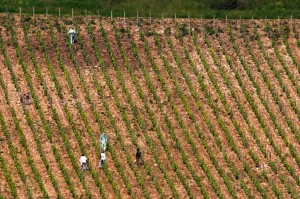 The debate around glyphosate continues. The product is used as an herbicide, in for instance Roundup. It has been, since a while back, on EU’s list of unsafe products that maybe should be phased out. It is now time to renew the permit for its use (which is done every ten years for pesticides). This has prompted much discussion. Last year, two conflicting reports about if glyphosate can be considered carcinogen or not, were published. The French government then asked the Anses, the French Food Safety Agency, to also investigate. Anses presented its report last month. Their conclusion was that “the level of proof that the product can cause cancer in animals and humans can be considered to be relatively limited.” On February 22, the European Parliament made their contribution to the discussion. The Parliament’s Environment Commission said that “the EU should not continue to authorize the product, which WHO has classified as a carcinogen”. The Environment Commission wants additional and independent scientific studies before the permit for use is extended. To be continued, in other words. Glyphosate is found in hundreds of pesticides and are widely used in European agriculture, including viticulture. Read more: mon-viti.com
The debate around glyphosate continues. The product is used as an herbicide, in for instance Roundup. It has been, since a while back, on EU’s list of unsafe products that maybe should be phased out. It is now time to renew the permit for its use (which is done every ten years for pesticides). This has prompted much discussion. Last year, two conflicting reports about if glyphosate can be considered carcinogen or not, were published. The French government then asked the Anses, the French Food Safety Agency, to also investigate. Anses presented its report last month. Their conclusion was that “the level of proof that the product can cause cancer in animals and humans can be considered to be relatively limited.” On February 22, the European Parliament made their contribution to the discussion. The Parliament’s Environment Commission said that “the EU should not continue to authorize the product, which WHO has classified as a carcinogen”. The Environment Commission wants additional and independent scientific studies before the permit for use is extended. To be continued, in other words. Glyphosate is found in hundreds of pesticides and are widely used in European agriculture, including viticulture. Read more: mon-viti.com
Château Carsin, Cadillac Côtes de Bordeaux | Britt’s Wines of the Month
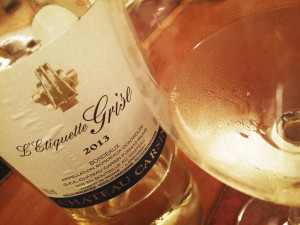 Britt’s Wines of the Month come from (another) one of our favourite chateaux in Bordeaux, Chateau Carsin in Rions in Entre-deux-Mers. The chateau is owned since the 1990s by Juha Berglund from Finland. He now runs it with the help of his daughter Nea who is the winemaker. The chateau is located in the appellation Cadillac Côtes de Bordeaux. We have known Château Carsin for a long time and we have always been very fond of the wines, not least the whites. We tasted recently a white and a red from Château Carsin.
Britt’s Wines of the Month come from (another) one of our favourite chateaux in Bordeaux, Chateau Carsin in Rions in Entre-deux-Mers. The chateau is owned since the 1990s by Juha Berglund from Finland. He now runs it with the help of his daughter Nea who is the winemaker. The chateau is located in the appellation Cadillac Côtes de Bordeaux. We have known Château Carsin for a long time and we have always been very fond of the wines, not least the whites. We tasted recently a white and a red from Château Carsin.
Château Carsin L’Etiquette Grise 2014, AOP Bordeaux, is made from the unusual grape called Sauvignon Gris (!) which is a little less aromatic than Sauvignon Blanc but with more complexity and depth. This is a very good wine with fine and high acidity, some grapefruit in the aromas and good body and some “fatness” (volume) on the palate.
Château Carsin, Cuvée Noire 2010, Cadillac Côtes de Bordeaux, is made from mostly Merlot in a soft and full bodied style with generous fruit and a good structure. A typical Merlot-based Bordeaux.
You will have the chance discover many excellent Bordeaux wines on BKWine’s wine tour to Bordeaux this autumn.
The first review of Tuscany, wines, regions, producers
 We have already received a review of one of our new books, Tuscany, wines, regions, producers. It is by Per Björgell writing in the BTJ newsletters. Here are some excerpts:
We have already received a review of one of our new books, Tuscany, wines, regions, producers. It is by Per Björgell writing in the BTJ newsletters. Here are some excerpts:
- “The book is a very nice cicerone for all who want to visit Tuscany, written by two experienced wine tasters and writers.”
- “The book goes systematically through district after district, the region’s history, grape varieties and denominations of the wines”
- “Beautiful colour images adorn almost every page”
- “A real gem to have on the trip!”
Thank you Per Björgell!
Read more about the book here: Tuscany, wines, regions, producers.
Champagne by Michael Edwards | book review
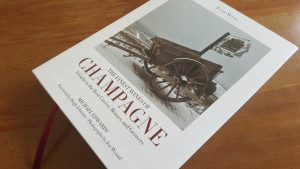 “The Finest Wines of Champagne” by Michael Edwards is an excellent introduction to the bubbly wines from northern France. The book focuses primarily on presenting a number of the most famous producers, many of the famous houses are included and some independent growers. The selection is not overwhelmingly original, it’s mostly old classic acquaintances, but the profiles are very interesting to read. It is complemented by an overall introduction to the area and the wines, also with a bit of history and a few regional maps. Each sub-district also get a brief introduction; especially worth reading for anyone who wants to get a better understanding of their separate characters. So, a very readable and ambitious book on the traditional champagne all beautifully presented and illustrated. Buy the book on Amazon.co.uk here, on Amazon.com here, and on Amazon.fr here.
“The Finest Wines of Champagne” by Michael Edwards is an excellent introduction to the bubbly wines from northern France. The book focuses primarily on presenting a number of the most famous producers, many of the famous houses are included and some independent growers. The selection is not overwhelmingly original, it’s mostly old classic acquaintances, but the profiles are very interesting to read. It is complemented by an overall introduction to the area and the wines, also with a bit of history and a few regional maps. Each sub-district also get a brief introduction; especially worth reading for anyone who wants to get a better understanding of their separate characters. So, a very readable and ambitious book on the traditional champagne all beautifully presented and illustrated. Buy the book on Amazon.co.uk here, on Amazon.com here, and on Amazon.fr here.
Travel
Dates set for 2017 for the wine tours to Chile-Argentina and South Africa
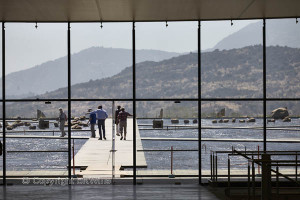 We have now nailed the dates for the two long-distance wine tours coming in the winter of 2017. It feels far away but you may need a good margin for so long and so special a trip. Here are the dates:
We have now nailed the dates for the two long-distance wine tours coming in the winter of 2017. It feels far away but you may need a good margin for so long and so special a trip. Here are the dates:
- Chile and Argentina wine tour in South America: 28 January to 12 February 2017 (read about this year’s program on the link)
- South Africa wine tour: 24 February to 6 March 2017 (read about this year’s program on the link)
If you want to know more about the trips you can also look at our two Facebook groups with pictures and videos from this year’s tours:
- Chile-Argentina, pictures and videos from the wine tour
- South Africa, pictures and videos from the wine tour
There are more pictures and videos coming so “join” the group and you will get the notification when there is something new.
Get to know the ins and outs of Champagne
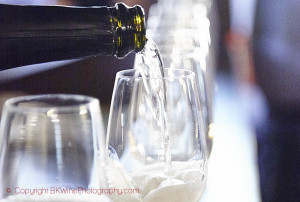 We have been working in Champagne for well over ten years, visiting vineyards and tasting some of the best champagnes. It is a region that can seem easy to understand, many of the famous wines are well-known brand names. But it is more complicated, and more fun, than that. The big names play an important role and make some brilliant champagnes, but if you see only that you are missing part of Champagne.
We have been working in Champagne for well over ten years, visiting vineyards and tasting some of the best champagnes. It is a region that can seem easy to understand, many of the famous wines are well-known brand names. But it is more complicated, and more fun, than that. The big names play an important role and make some brilliant champagnes, but if you see only that you are missing part of Champagne.
Today there is a host of smaller producers, making “growers’ champagne”, champagnes that are more individualistic and – perhaps – more interesting. On our wine tour to Champagne we will show you both, plus take you to some exquisite all-champagne meals. Join us this autumn!
Bordeaux for the wine lover
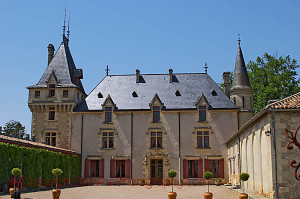 In some ways Bordeaux and Champagne are very similar. The wines are of course totally different, but both share similar international fame and both have wine producers that many wine-lovers can only dream of tasting. And if you travel to Bordeaux you have the same challenge as for Champagne. If you focus only on the famous names, as some tour organisers do, if you visit only the classified growths, les cru classés, and the likes, then you will miss out on much of the fun.
In some ways Bordeaux and Champagne are very similar. The wines are of course totally different, but both share similar international fame and both have wine producers that many wine-lovers can only dream of tasting. And if you travel to Bordeaux you have the same challenge as for Champagne. If you focus only on the famous names, as some tour organisers do, if you visit only the classified growths, les cru classés, and the likes, then you will miss out on much of the fun.
On our wine tour to Bordeaux you will get both. You will get your fair share of luxurious Cinderella chateaux, but you will also get to meet the owners or winemakers at what represents 90 % Bordeaux: smaller, family-owned wineries that make wines that you can afford to drink even without selling your car. Plus you will get some of France’s best gourmet food.
Discover Douro: beautiful landscape, spectacular wines
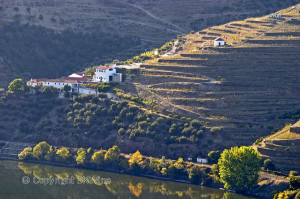 Or perhaps the other way around: the landscape is one of the world’s most spectacular that you can find in a wine region. A winding river with break-neck slopes all along. And incredibly winding roads. Combine this with some fantastic wines – although most of them are almost unknown – and you get the Douro Valley. It is always such a pleasure to take people along the Douro Valley since all the time there are new surprises, travellers discover things that they didn’t think, or know, existed.
Or perhaps the other way around: the landscape is one of the world’s most spectacular that you can find in a wine region. A winding river with break-neck slopes all along. And incredibly winding roads. Combine this with some fantastic wines – although most of them are almost unknown – and you get the Douro Valley. It is always such a pleasure to take people along the Douro Valley since all the time there are new surprises, travellers discover things that they didn’t think, or know, existed.
What about a dinner along the river in what is perhaps Portugal’s best restaurant, with seven different wines? One for each dish. (And some bonus.) Join us this autumn on a wine tour to the Douro Valley in Portugal.
Features
What are ”ethical” and ”unethical” wines?
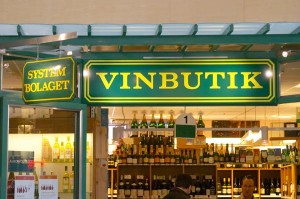 The Swedish monopoly has begun in 2016 to implement a sustainability program that was developed in 2015. The program comprises 829 articles from 22 so-called “risk countries” in the “standard range” of products, which is 21% of all countries and barely 5% of all articles in the full range, but a full 95% of the sales volume. Today there are 29 “ethical” products in the range, which does not mean that the other approximately 15,000 articles are unethical. (Note: Systembolaget has around 2000 products in its own range. The other products are in the “on order” range that is the responsibility of the independent wine importers and not managed by Systembolaget.)
The Swedish monopoly has begun in 2016 to implement a sustainability program that was developed in 2015. The program comprises 829 articles from 22 so-called “risk countries” in the “standard range” of products, which is 21% of all countries and barely 5% of all articles in the full range, but a full 95% of the sales volume. Today there are 29 “ethical” products in the range, which does not mean that the other approximately 15,000 articles are unethical. (Note: Systembolaget has around 2000 products in its own range. The other products are in the “on order” range that is the responsibility of the independent wine importers and not managed by Systembolaget.)
Systembolaget has also begun a sort of “ethical labelling” of the products. BKWine Magazine’s reporter Mikael Karlin met recently with Systembolaget’s staff responsible for the ethical project. Here is his report from the meeting: Ethical wine? Systembolaget’s ethical labelling does not mean that no-label wines are unethical.
Hirsch Vineyards, a young wine producer in Sonoma Coast
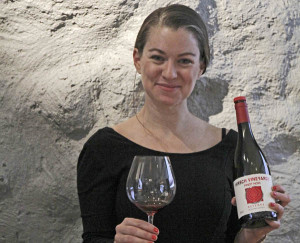 David Hirsch was one of the first to plant wine in the coastal area of Sonoma County in the wine region known today as the Sonoma Coast overlooking the Pacific Ocean. Although it is close to the coast the farm is at more than 400 meters altitude to get above the fog banks that come up almost every morning from the Pacific Ocean. The rolling landscape, with many fine slopes to grow vines on, was created thanks to the proximity to the San Andreas Fault.
David Hirsch was one of the first to plant wine in the coastal area of Sonoma County in the wine region known today as the Sonoma Coast overlooking the Pacific Ocean. Although it is close to the coast the farm is at more than 400 meters altitude to get above the fog banks that come up almost every morning from the Pacific Ocean. The rolling landscape, with many fine slopes to grow vines on, was created thanks to the proximity to the San Andreas Fault.
The first vines were planted in 1980 and until 2001 all grapes were sold to other producers. In 2002 Hirsch began to produce their own wines, both pinot noir and Chardonnay.
Read more in Peter Cronström’s article on BKWine Magazine: Hirsch Vineyards, Sonoma Coast, California.
Top Italian wines selected and presented by Gambero Rosso
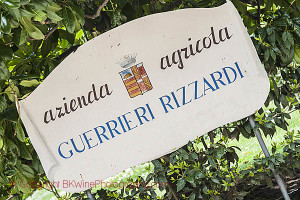 Gambero Rosso – the red shrimp – is the name of the inn where Pinocchio once ate supper together with the Fox and the Cat. The inn in the fairy-tale world has given its name to Italy’s most famous wine guide and one of the world’s largest annual wine tastings. Lorenzo Ruggeri, who is one of the leading editors (senior editor), held a very interesting Master Class on his world tour with Gambero Rosso when the travelling party reached Stockholm. He presented wines judged to be of particular interest. Probably they adapt what wines to show for each country. It seems likely when four of thirteen wines (31%) were called Amarone at the Sweden-visit.
Gambero Rosso – the red shrimp – is the name of the inn where Pinocchio once ate supper together with the Fox and the Cat. The inn in the fairy-tale world has given its name to Italy’s most famous wine guide and one of the world’s largest annual wine tastings. Lorenzo Ruggeri, who is one of the leading editors (senior editor), held a very interesting Master Class on his world tour with Gambero Rosso when the travelling party reached Stockholm. He presented wines judged to be of particular interest. Probably they adapt what wines to show for each country. It seems likely when four of thirteen wines (31%) were called Amarone at the Sweden-visit.
Read more on this fascinating tasting in Mikael Karlin’s article on BKWine Magazine: In the company of the Red Shrimp at the edge of Europe – selected Italian wines.
Bored With Cabernet And Chardonnay? Look For Something Local And Forgotten! | Britt on Forbes
Wine consumers love Cabernet Sauvignon, Chardonnay, Shiraz, and Sauvignon Blanc. Or don’t they? There is a lot of talk nowadays about grapes that are forgotten, local, unusual, indigenous, you name it. Suddenly wine geeks are looking for grapes they have never heard of. Why? Are these grapes better? Are the globe trotter grapes I just mentioned getting boring? But I agree, the unknown is adventurous and exciting. I just had a Languedoc wine from Southern France made from the Cinsault grape. It was a delicate, elegant wine, very drinkable and enjoyable and I just wish there were more like it.
Read more on this in Britt’s article, originally published on Forbes: Unusual grape varieties, for the adventurous wine-lover | Britt on Forbes.
Does Nyetimber make England’s best sparkling wine?
 There has been much media noise about the new sparkling wines from north of the Channel, grown on the English limestone and chalk soils that are similar to those found in Champagne. Is England a (or the) future producer of sparkling wines in the top class? BKWine’s reporters Ola Öhlund and Michael Karlin had the opportunity to immerse themselves in modern English winemaking with three wines from Nyetimber. Delicious but pricey could be a summary.
There has been much media noise about the new sparkling wines from north of the Channel, grown on the English limestone and chalk soils that are similar to those found in Champagne. Is England a (or the) future producer of sparkling wines in the top class? BKWine’s reporters Ola Öhlund and Michael Karlin had the opportunity to immerse themselves in modern English winemaking with three wines from Nyetimber. Delicious but pricey could be a summary.
Read more on this in Ola Öhlund’s and Michael Karlin’s article on BKWine Magazine: “Britagne” is British bubble and not a French province misspelled.
You can explore other outstanding sparkling wines on-site on a wine tour to Champagne in autumn with BKWine.
Les Fumées Blanches and François Lurton – “I am the General!”
 Les Fumées Blanches – that is the topic of the tasting. François Lurton, the man behind the wine, is our cicerone. Les Fumées Blanches is the best-selling sauvignon blanc wine at Systembolaget (the Swedish monopoly): in 2015 1.9 million litres were sold. So a really big hitter. Moreover, it is with a good margin the most expensive of all white wines on Systembolaget’s Top-10 list.
Les Fumées Blanches – that is the topic of the tasting. François Lurton, the man behind the wine, is our cicerone. Les Fumées Blanches is the best-selling sauvignon blanc wine at Systembolaget (the Swedish monopoly): in 2015 1.9 million litres were sold. So a really big hitter. Moreover, it is with a good margin the most expensive of all white wines on Systembolaget’s Top-10 list.
Why so popular? Yes, that was the question that we would get the answer to. The word for the day is spelled PURITY.
Read more on this and his meeting with François in Wilhelm Arnör’s article on BKWine Magazine: Les Fumées Blanches and François Lurton – “I am the General!”
If you want to taste more Sauvignon Blanc wines (and plenty of delicous reds) you can come on the wine tour to Bordeaux this autumn with BKWine. [divider_flat]
Don’t be an egoist! Share with your friends and other wine enthusiasts! Forward the Brief to your friends! Suggest that they sign up for a free subscription !
© Copyright BKWine






